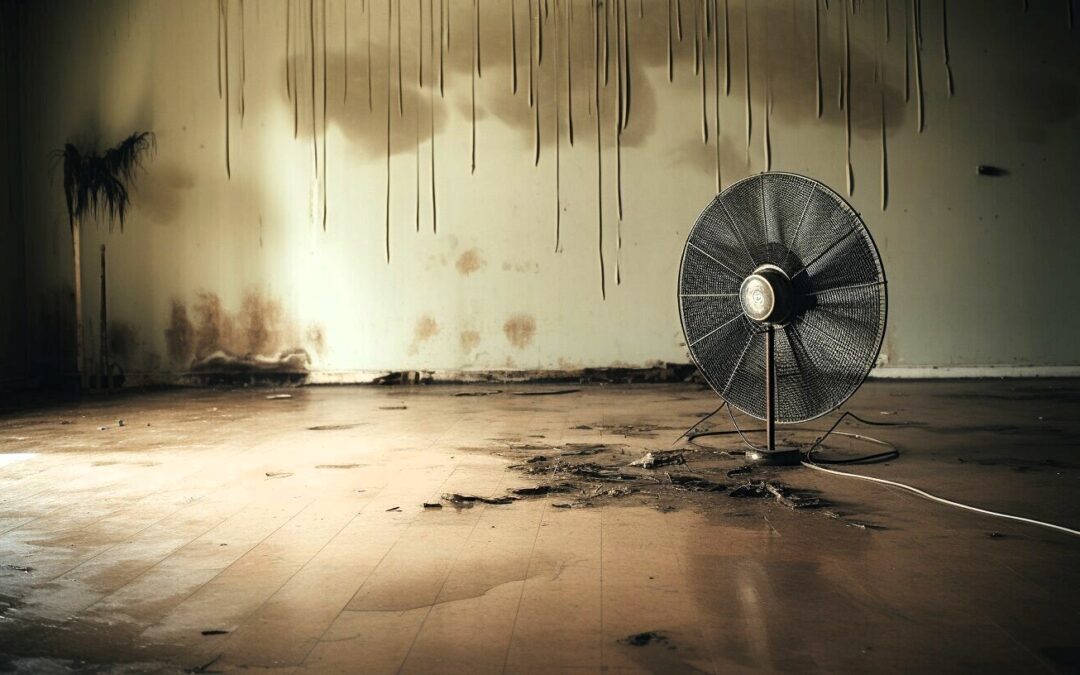How Long To Run Fans After Water Damage? any Idea? :- Water damage is one of the most challenging situations a homeowner can face. Whether it’s caused by a burst pipe, flooding, or an appliance malfunction, the aftermath can be overwhelming.
The urgency of addressing water damage cannot be overstated, as delays can lead to more severe problems, including mold growth, structural damage, and increased restoration costs. Homeowners often wonder how long the water damage restoration process will take, as this timeline is crucial for planning and mitigating the impact on their daily lives.
In this article, we’ll delve into the various factors that influence the duration of water damage restoration, such as the extent of the damage, the types of materials affected, and the environmental factors like humidity levels, and provide insights into what you can expect at each stage of the process.
Water damage restoration typically takes between 72 hours to several weeks, depending on factors such as the extent of the damage, the types of materials affected, the drying methods used, and whether professional restoration services are involved.
Factors That Influence the Duration of Water Damage Restoration
Several factors determine how long it will take to restore a property after water damage. Understanding these variables can help homeowners set realistic expectations and make informed decisions during the restoration process.
Extent of the Damage:
The severity of the water damage plays a significant role in determining the restoration timeline. Minor incidents, such as a small leak, may require only a few days of drying, while extensive flooding can take weeks to address fully.
The volume of water, presence of standing water, and the areas affected (e.g., walls, flooring, ceilings) will dictate the scope of the restoration work required. Saturated materials like drywall, insulation, and carpets may require longer drying times and could necessitate more extensive restoration efforts.
Type of Materials Affected:
Different building materials react differently to water. Porous materials like drywall, carpets, and insulation absorb water quickly, leading to saturation and increased drying times. Non-porous materials, such as tile and concrete, may resist water penetration but can still trap moisture underneath, prolonging the drying process. The type of material affected directly impacts the length of time needed for complete restoration.
Humidity Levels:
The environmental humidity levels both inside and outside the home can influence the drying time. In areas with high humidity, it may take longer for moisture to evaporate from affected materials, requiring extended use of dehumidifiers and fans. Conversely, in drier climates, the process might be quicker but still requires careful monitoring of indoor air quality and moisture content.
Drying Methods Used:
The tools and techniques employed during the restoration process also affect how long it will take. Professional restoration companies use industrial-grade air movers, dehumidifiers, and moisture meters to speed up drying and ensure all moisture is removed.
DIY methods, while potentially effective for minor issues, often extend the drying period due to less powerful equipment and a lack of specialized knowledge. Advanced drying technologies, such as thermal imaging and hidden moisture detection, are often used by professionals to ensure thorough drying.
Professional vs. DIY Restoration:
Hiring a professional water damage restoration service can significantly reduce the restoration timeline. Professionals bring expertise, advanced equipment like industrial air movers and dehumidifiers, and comprehensive strategies that ensure a thorough drying process.
In contrast, attempting to handle restoration on your own may lead to incomplete drying, prolonged timelines, and a higher risk of mold growth or structural issues. Additionally, professionals can assist with insurance claims, ensuring that all necessary documentation is provided to your homeowners insurance for a smoother claims process.
The Drying Process: What to Expect
The drying process is a critical phase in water damage restoration. It involves several steps and requires careful monitoring to ensure that all moisture is effectively removed from the affected areas.
Immediate Actions:
As soon as water damage occurs, taking immediate steps is vital to prevent further damage. This includes stopping the water source, shutting off utilities like electricity to avoid hazards, and beginning the drying process as quickly as possible. Removing standing water and using fans and dehumidifiers right away can help minimize the damage and start the process of moisture extraction.
Monitoring Moisture Levels:
Throughout the drying process, it’s essential to monitor the moisture levels in affected materials. Restoration professionals use moisture meters to track the progress and ensure that the area is thoroughly dried.
This monitoring helps prevent the development of mold, which can begin to grow within 24 to 48 hours if moisture levels are not properly managed. Professionals also check for hidden moisture in areas such as behind walls and under flooring to ensure that no moisture is left behind.
Duration Estimates:
The time it takes to dry out an area after water damage varies based on several factors, including the severity of the damage and the materials involved. For example, drying out a small room with minimal water damage might take 24 to 48 hours, while larger, more complex cases could take several days to weeks. It’s crucial to continue drying efforts until moisture levels are within safe ranges, as premature cessation can lead to further issues like mold growth and structural damage.
Common Challenges and How to Overcome Them
Water damage restoration is not without its challenges. Understanding these potential obstacles can help homeowners better prepare and respond effectively.
Mold Growth:
One of the most significant risks following water damage is mold growth. Mold can start developing within 24 to 48 hours, making it imperative to act quickly. Using industrial-grade fans and dehumidifiers, along with professional mold remediation services, can help prevent this issue. Mold remediation is often a critical component of water damage restoration, requiring the use of specialized equipment and cleaning agents to ensure complete removal.
Structural Damage:
Water can compromise the structural integrity of a building, particularly if it has seeped into foundational elements like beams and joists. Addressing structural damage requires immediate attention from professionals to ensure the safety and stability of the property. Restoration experts assess the damage and may employ advanced drying technologies to mitigate the risk of further deterioration.
Drying Hidden Areas:
Water often finds its way into hidden spaces, such as behind walls, under flooring, and in crawl spaces. These areas can be difficult to dry and are often overlooked in DIY restoration efforts. Professionals use specialized equipment, like moisture meters and thermal imaging, to detect and dry hidden moisture, preventing long-term damage. Ensuring that these areas are properly dried is crucial for preventing future problems, such as mold growth and compromised structural integrity.
Conclusion
Restoring a home after water damage is a complex process that requires time, expertise, and the right equipment. While minor water damage might be resolved in a few days, more severe cases can take weeks to fully address.
The timeline depends on various factors, including the extent of the damage, the materials involved, environmental conditions like humidity levels, and whether professional help is enlisted. Homeowners should focus on acting quickly, monitoring moisture levels, and ensuring that all affected areas are thoroughly dried to prevent issues like mold growth and structural damage.
By understanding the restoration process, utilizing the right drying technologies, and working with experienced professionals, you can restore your home to its pre-damage condition with confidence.
FAQs about How Long To Run Fans After Water Damage
How long should I run fans after water damage?
You should run fans for at least 48–72 hours to ensure the area is properly dried. The exact duration may depend on the extent of the damage and humidity levels.
Can I stop running fans once the surface feels dry?
No, it’s important to keep running fans even if the surface feels dry. Moisture can still be present in underlying materials and could lead to mold if not fully dried.
What kind of fans should I use?
Industrial-grade air movers or high-powered fans are best for effective drying. They move air more efficiently than standard household fans.
How do I know when it’s safe to stop running fans?
Use a moisture meter to check if the moisture content is between 10–15%. Once normal moisture levels are reached, it’s safe to stop.
Can running fans prevent mold growth?
Yes, running fans helps reduce moisture and prevents mold growth. Mold can start developing within 24–48 hours in damp environments.
Should I hire professionals for drying after water damage?
If the water damage is extensive, hiring professionals is recommended. They have specialized equipment to ensure thorough drying and prevent long-term damage.

